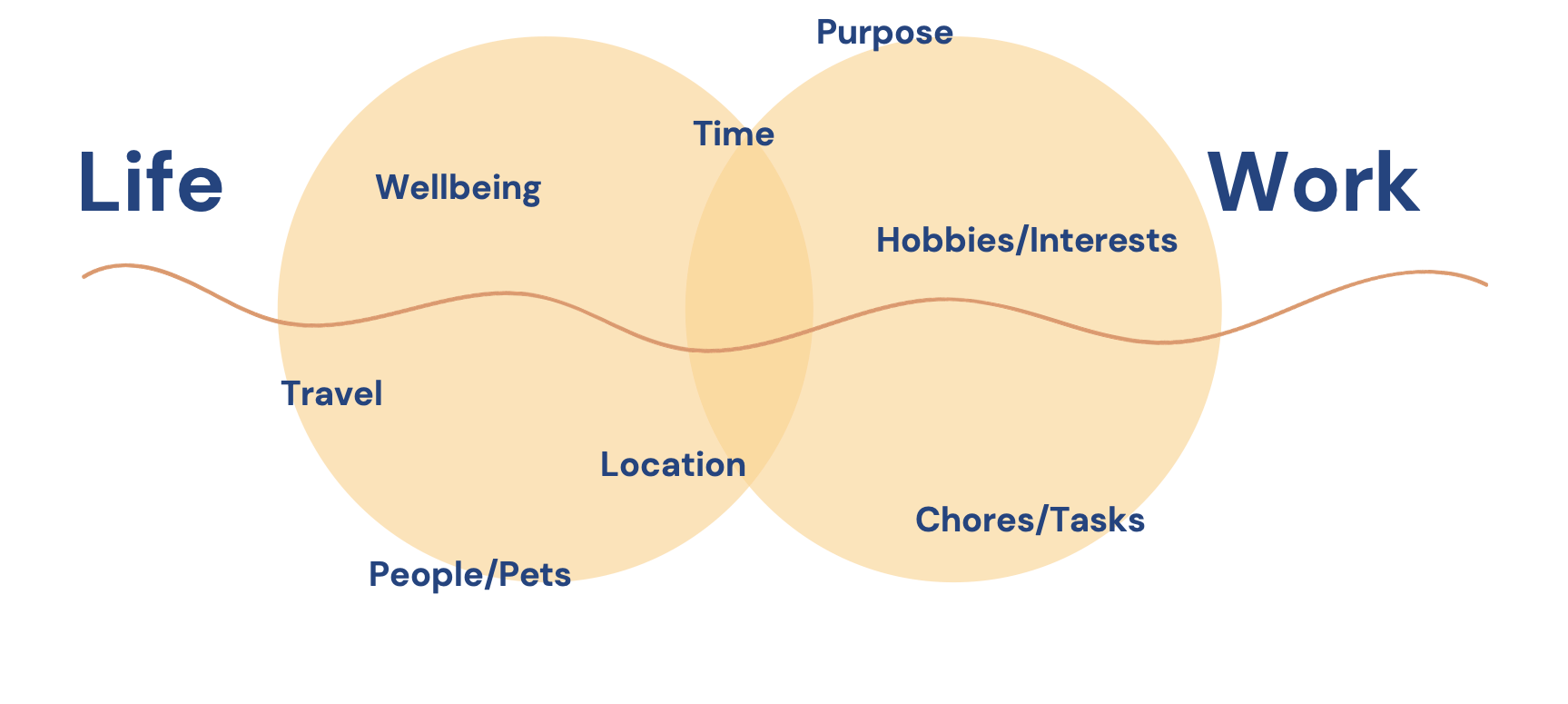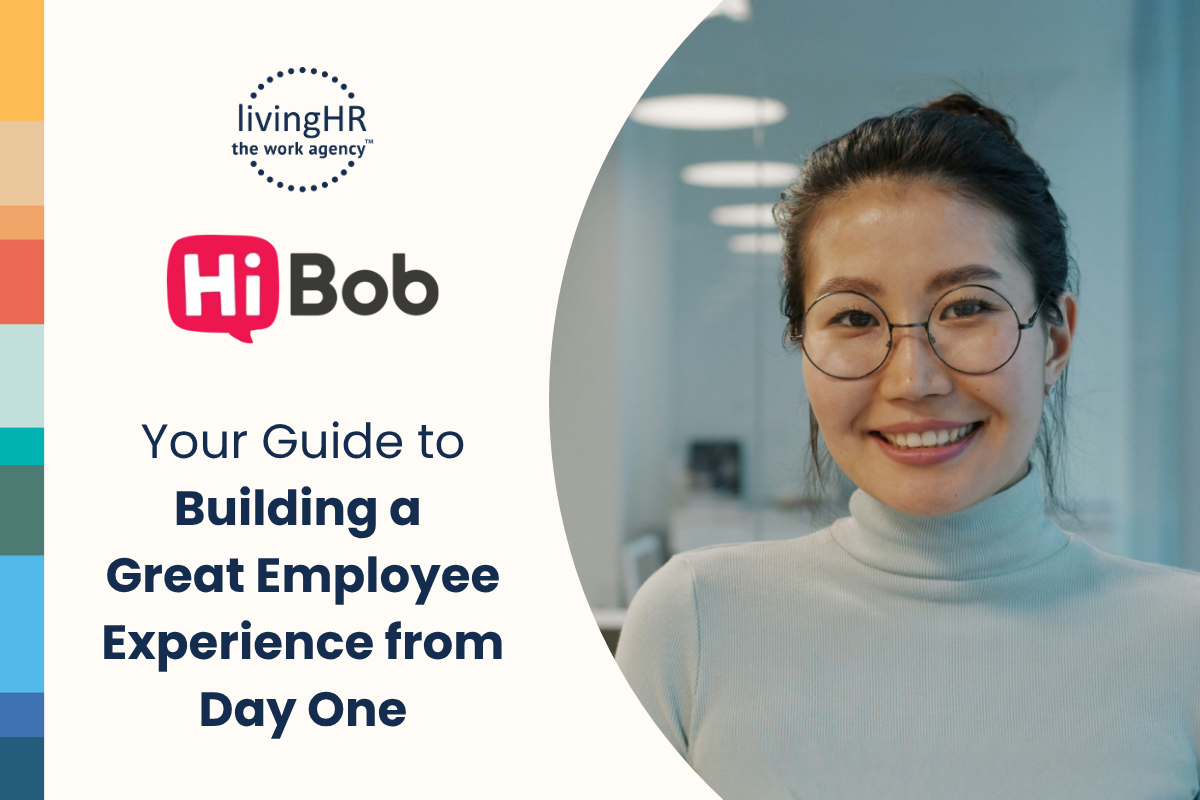In our reality of widespread remote work, blurred boundaries between our home and professional lives are creating new stress points for humans at work. More Americans are suffering from unclear or nonexistent boundaries and burnout, according to a July 2021 survey by the global online employment platform Monster. Over two-thirds, or 69 percent, of employees, are experiencing burnout symptoms while working from home, the survey found. That’s up almost 20 percent from a similar survey just two months earlier in May.
Despite this challenge presented by working remotely, the positives outweigh the negatives, with 54 percent of employees still seeking to work from home even after the pandemic, according to a Pew Research Center survey.
“Work-life Integration” is an approach that creates more synergies between all areas that define life: work, home, family, community, personal wellbeing, and health. It does not mean that we spend even more time working or that we have fewer boundaries. In fact, it means the opposite – that we acknowledge all aspects of our lives in a realistic way and make space for those things even during typical work hours.
Leaders can effectively work with their teams to learn how to establish a healthy work-life integration strategy by establishing clear boundaries that prevent burnout and turnover.

10 Ways to Help Your Team Set Boundaries
- Start with Communication. Every person on your team has a unique set of boundaries. That’s why it’s so important for leaders to ask and listen. Establish a safe, mutually respectful, and vulnerable space for these conversations by sharing your own boundaries before asking a team member to share theirs. Suggest the following: Make the team aware of certain times of day you sign off – for example, for lunch or at a specific time at the end of the day. Include a note in your email signature of the hours when you’re online to respond to emails. Let everyone know when you’re out of the office on personal matters, you are unavailable to answer emails or calls unless it is an emergency. Then, define what constitutes an emergency, so they have a clear grasp.
- Encourage Time Off. Time off gives your team members a much-needed physical and mental break from their responsibilities. It’s important to remind them that they’ve earned it. Suggest they plan their days off as far ahead as possible so they’ll actually take the time off when it comes.
- Suggest a Separate Workspace. When possible, suggest your team members create a physical separation between their remote workspace and personal space. If they have their own office, they could close the door during work hours. For those in smaller spaces or who need to be available to young kids, they could try closing off the space with a movable room divider or curtain.
- Turn the Camera Off. Be present and connect face-to-face to be able to see human expressions as much as possible. At the same time, offer grace to yourself and others if there are moments when you or someone needs a break from “being on”.
- Create Space for Different Styles. Some of us are open books while others keep things closer to the chest, and there could be great reasons for this. Remind all team members that we should understand others may not match our own communication style.
- Engage in Supportive Prioritization Conversations. Have open conversations about tasks, goals, and to-do lists. Offering perspective to support proper prioritization or delegation helps maintain a teamwork vibe while working remotely and reinforces open lines of communication when our workloads threaten our boundaries. Limiting unnecessary projects will improve their focus on important tasks.
- Celebrate the Benefits of Routine. Typically speaking, when team members begin and end work and take breaks at the same time every day, they’re more likely to follow a routine with more clear boundaries. Breaks give them recovery time to boost their performance and energy. To aid in this routine mindset, they could also try building a transition activity into their pre- and post-work schedule, such as a walk, a quiet meditation, or a 30-minute workout.
- End the Day with Transition. Discourage rushing to accomplish tasks that can wrap up tomorrow. Tell them to instead transition out of your workday by wrapping up current projects and prepping a to-do list for the next day.
- Silence Notifications. Suggest silencing notifications at the end of the day so emails and messages won’t interrupt dinner or family time.
- Power Down the Computer. Establishing a hard deadline to end work and power down the computer is necessary for positive work-life integration. When all technology is off for the night, they won’t be tempted to send another email.
We’re Here to Help
At livingHR, we believe in considering the many “levers” that need to be pulled for whole-person wellbeing - that means fulfilling belonging, foundational, purposeful, physical, and emotional needs. Organizations can't always max out all of these levers, so we work to understand what's most important to your people and strike the right human-first balance.
livingHR’s transformational full-suite wellbeing solution, WellbeingWx, is designed to actively prevent burnout and support whole-person wellbeing in your workplace. Designed for all audiences within an organization, from leaders to employees to the people function, WellbeingWx completely transforms the approach to wellbeing at work. Taking a proactive approach to wellbeing, we address what you can do while removing stigmas, preventing burnout, and effectively planning for workload capacity across teams. Learn more with WellbeingWx.




